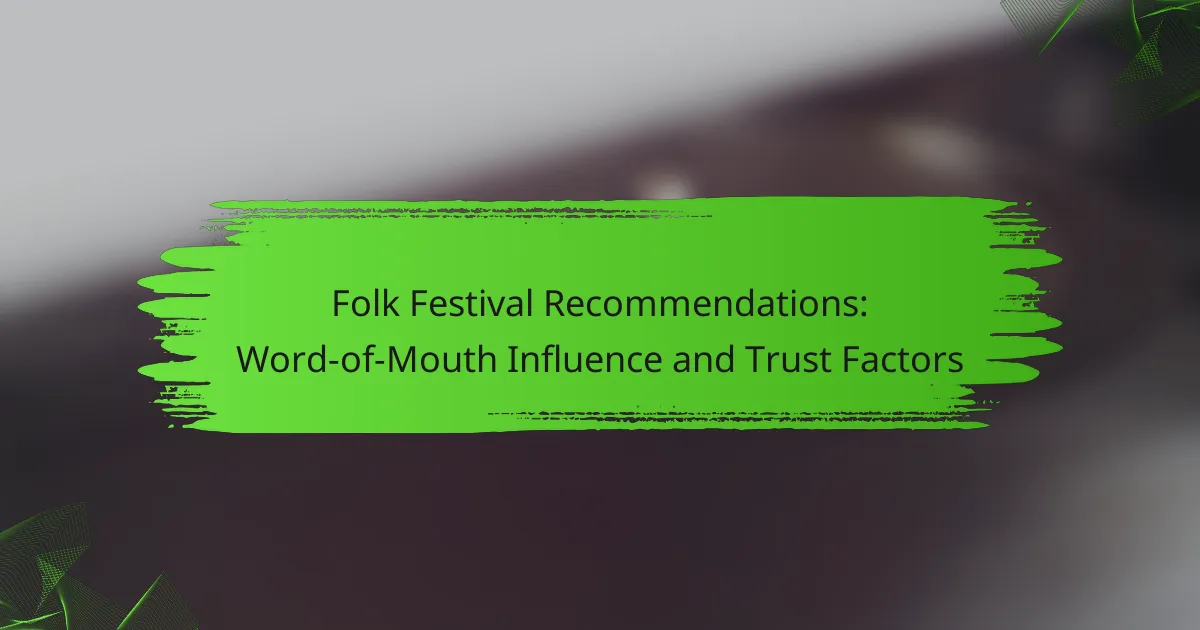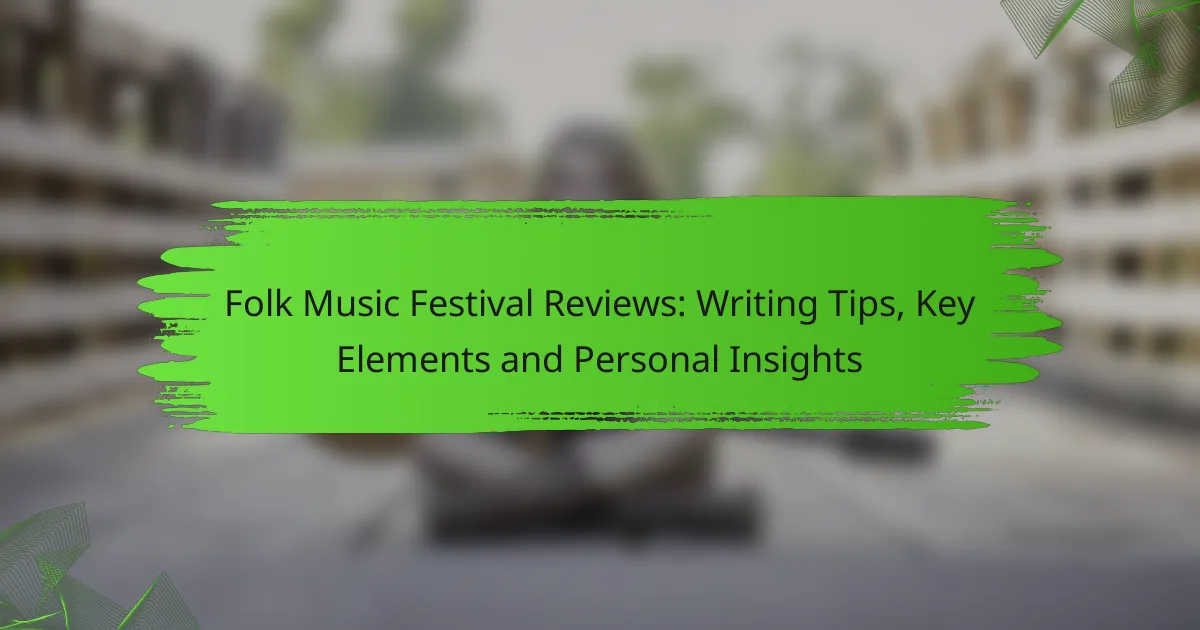Folk festivals have increasingly turned to influencer marketing as a powerful tool to enhance visibility and foster genuine connections with diverse audiences. By leveraging influencers, these events can significantly expand their reach and attract a larger demographic of potential attendees. Additionally, understanding audience engagement through various metrics allows organizers to gauge participation and satisfaction, ultimately measuring the festival’s impact on the community.

How do folk festivals leverage influencer marketing?
Folk festivals utilize influencer marketing to boost their visibility and engage audiences effectively. By partnering with influencers, festivals can reach wider demographics and create authentic connections with potential attendees.
Influencer partnerships enhance visibility
Influencer partnerships significantly increase the visibility of folk festivals by tapping into the influencer’s established audience. This collaboration often involves social media promotions, where influencers share content related to the festival, such as behind-the-scenes footage or artist interviews.
Festivals can choose influencers based on their audience demographics, ensuring alignment with the festival’s target market. For instance, a festival focusing on traditional music might partner with influencers who have a passion for cultural heritage, thus attracting like-minded attendees.
Influencers create authentic engagement
Influencers foster authentic engagement by sharing personal experiences and stories related to the festival. Their genuine enthusiasm resonates with followers, encouraging them to participate and share their own experiences.
This type of engagement is more impactful than traditional advertising, as it builds trust and community around the festival. For example, influencers might host live Q&A sessions or interactive posts, inviting their followers to ask questions about the festival, which further enhances interest and participation.
Case studies of successful campaigns
One notable case is the partnership between a well-known folk festival and a popular travel influencer. The influencer created a series of posts leading up to the event, showcasing the festival’s unique offerings, which resulted in a significant increase in ticket sales and social media engagement.
Another example involves a local festival that collaborated with several micro-influencers. By leveraging their niche audiences, the festival achieved a diverse reach, resulting in a sold-out event and positive feedback from attendees who discovered the festival through these influencers.
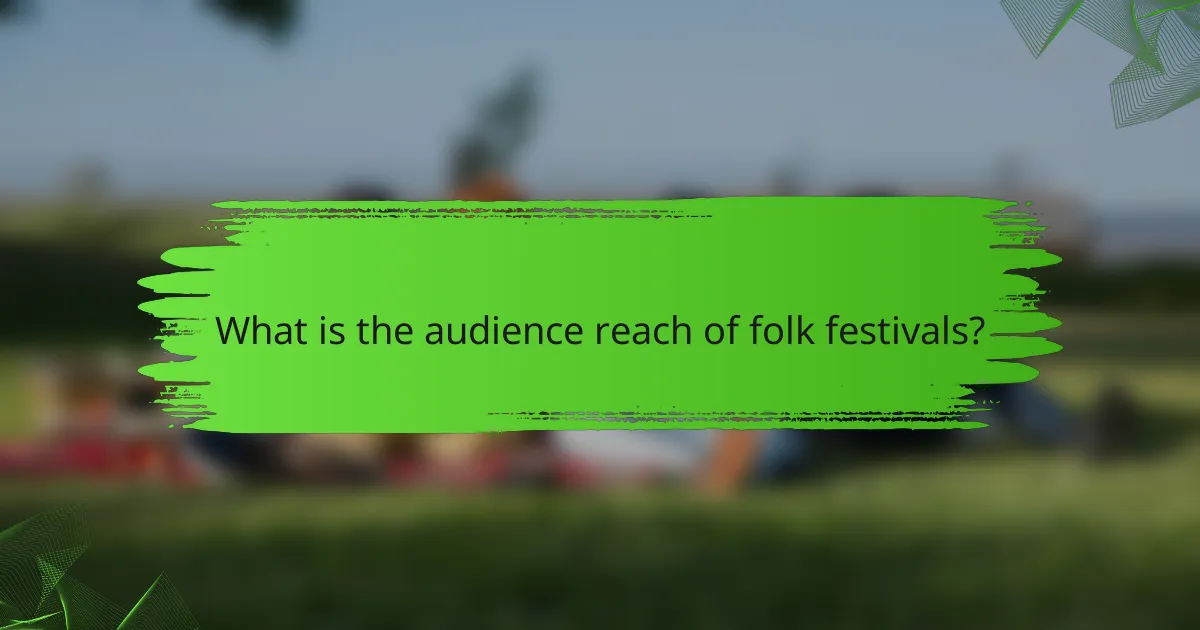
What is the audience reach of folk festivals?
The audience reach of folk festivals varies significantly based on factors such as location, marketing strategies, and the festival’s reputation. Generally, these events can attract thousands to tens of thousands of attendees, depending on their scale and popularity.
Demographics of festival attendees
Folk festival attendees typically span a wide range of ages, but many are adults between 25 and 45 years old. Families with children are also common, as festivals often feature activities for all ages. Understanding the demographics helps organizers tailor their programming and marketing strategies effectively.
Gender representation at folk festivals tends to be fairly balanced, although some events may attract slightly more female attendees. Additionally, cultural backgrounds can vary widely, reflecting the diverse nature of folk music and its roots.
Geographic distribution of audiences
The geographic distribution of audiences for folk festivals can be quite broad, with many attendees traveling from neighboring cities or even countries. Festivals located in urban areas often draw larger crowds due to accessibility and local population density.
In Europe, for example, festivals may attract visitors from multiple countries, while in the United States, regional festivals often see attendees from surrounding states. This geographic reach can enhance the festival’s cultural exchange and community engagement.
Impact of social media on reach
Social media plays a crucial role in expanding the audience reach of folk festivals. Platforms like Instagram, Facebook, and TikTok allow organizers to promote events widely, engage potential attendees, and share real-time updates. This digital presence can significantly boost ticket sales and attendance numbers.
Influencers and local artists often leverage their social media followings to promote festivals, creating a ripple effect that can attract new audiences. Engaging content, such as behind-the-scenes footage and artist interviews, can further enhance interest and participation.

How do folk festivals measure audience engagement?
Folk festivals measure audience engagement through various metrics that reflect how attendees interact with the event. These metrics help organizers understand participation levels, satisfaction, and the overall impact of the festival on the community.
Metrics for engagement analysis
Key metrics for analyzing audience engagement at folk festivals include attendance numbers, social media interactions, and post-event surveys. Attendance numbers provide a baseline for participation, while social media metrics, such as likes, shares, and comments, indicate online engagement. Surveys can reveal attendee satisfaction and gather feedback on specific aspects of the festival.
Another important metric is the duration of stay, which measures how long attendees remain at the event. Longer stays often correlate with higher engagement levels, suggesting that attendees are enjoying the activities and performances.
Tools for tracking audience interaction
Several tools can assist folk festival organizers in tracking audience interaction effectively. Social media analytics platforms, such as Hootsuite or Sprout Social, allow for real-time monitoring of engagement on various channels. These tools can provide insights into which posts resonate most with the audience.
Event management software, like Eventbrite or Ticketmaster, often includes features for tracking ticket sales and attendance patterns. Additionally, mobile apps designed for festivals can enhance interaction by offering features like live polling or feedback forms, allowing organizers to gather data directly from attendees.
Case examples of engagement strategies
One successful engagement strategy used by folk festivals is the incorporation of interactive workshops. For instance, festivals that offer hands-on sessions in crafts or music often see increased participation and positive feedback. This approach not only engages attendees but also fosters a sense of community.
Another effective strategy is leveraging social media challenges or contests. Festivals that encourage attendees to share their experiences online using a specific hashtag can significantly boost online visibility and engagement. For example, a photo contest where participants share their favorite festival moments can create a vibrant online community and attract more attendees in future years.
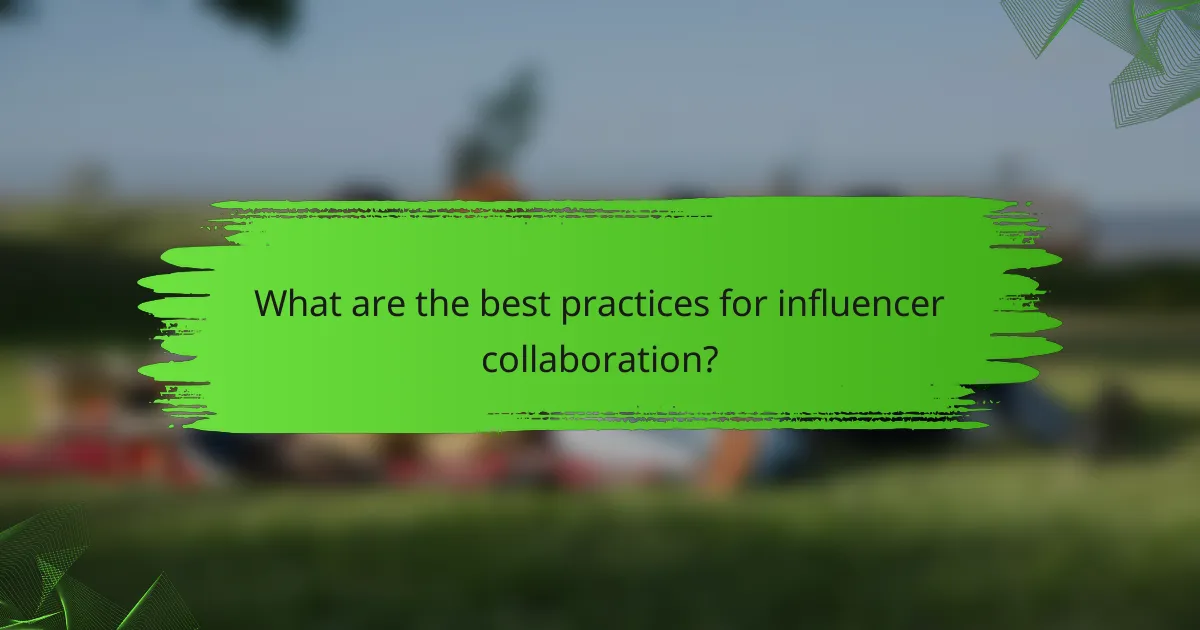
What are the best practices for influencer collaboration?
Best practices for influencer collaboration include selecting the right influencers, developing effective content strategies, and fostering long-term relationships. These steps ensure that partnerships are mutually beneficial and resonate with the target audience.
Choosing the right influencers
Selecting the right influencers is crucial for successful collaborations. Look for individuals whose values align with your festival’s brand and who have a genuine connection with their audience. Consider factors such as engagement rates, audience demographics, and previous collaborations.
Utilize tools like social media analytics to assess potential influencers. Aim for those who have a strong presence in the folk music community, as they will likely have a more engaged and relevant audience.
Creating effective content strategies
Developing effective content strategies involves crafting messages that resonate with both the influencer’s audience and your festival’s goals. Collaborate with influencers to create authentic content that showcases the festival experience, such as behind-the-scenes footage or artist interviews.
Consider using a mix of formats, including videos, stories, and blog posts, to maximize reach. Establish clear guidelines while allowing influencers the creative freedom to present the content in their unique style.
Building long-term relationships
Building long-term relationships with influencers can lead to more impactful collaborations over time. Engage with influencers beyond single campaigns by inviting them to events, providing exclusive access, or involving them in festival planning.
Regular communication and feedback are essential for nurturing these relationships. Show appreciation for their contributions and keep them informed about festival developments to maintain their interest and support.
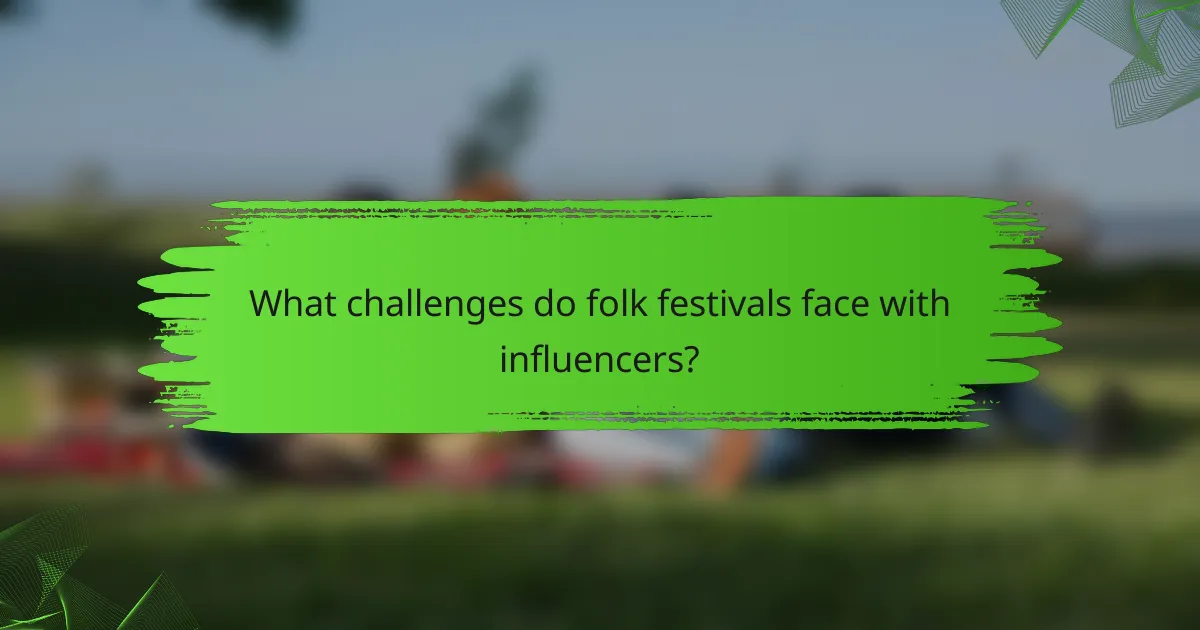
What challenges do folk festivals face with influencers?
Folk festivals often encounter challenges when collaborating with influencers, primarily related to aligning expectations and managing public perception. These issues can affect audience engagement and overall festival success.
Managing influencer expectations
Clear communication is essential for managing influencer expectations. Festivals should outline deliverables, timelines, and compensation upfront to avoid misunderstandings. For instance, if an influencer is expected to create multiple posts, specifying the number and type of content can help ensure alignment.
Additionally, festivals should consider the influencer’s audience and how it aligns with their target demographic. This alignment can enhance the effectiveness of promotional efforts, ensuring that the influencer’s reach translates into meaningful engagement.
Addressing negative feedback
Negative feedback can arise from influencer partnerships, impacting the festival’s reputation. Festivals should proactively monitor social media channels and engage with criticism constructively. Acknowledging concerns and providing thoughtful responses can mitigate potential damage.
It’s also beneficial to have a crisis management plan in place. This plan might include guidelines for responding to negative comments, as well as strategies for turning a negative experience into a positive narrative. For example, if an influencer shares a less favorable experience, the festival could highlight improvements made in response to feedback, showcasing their commitment to attendee satisfaction.

